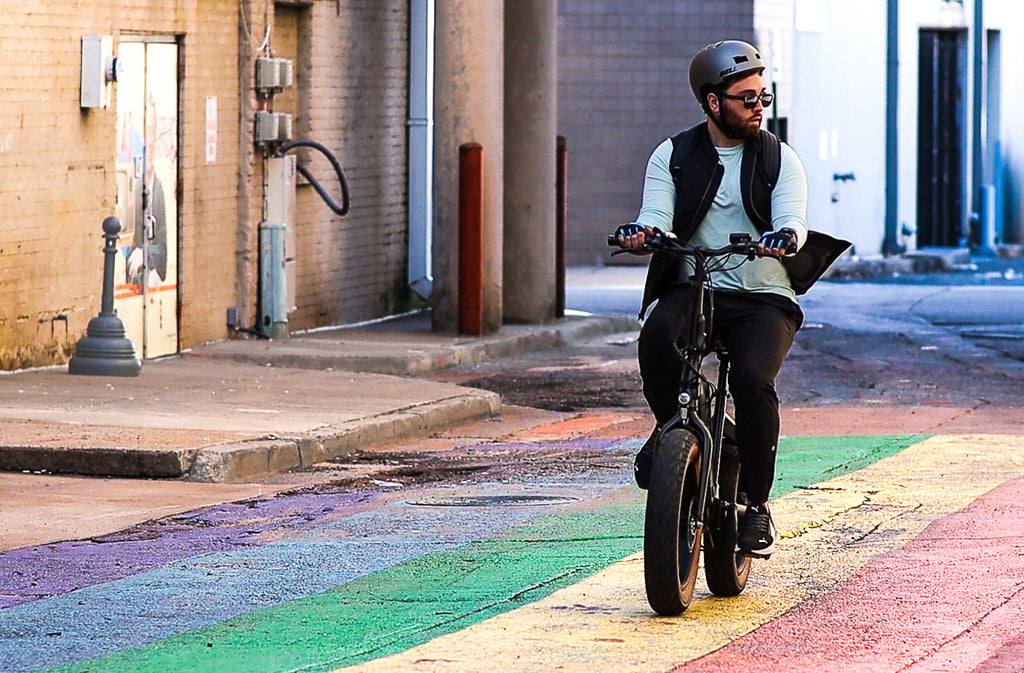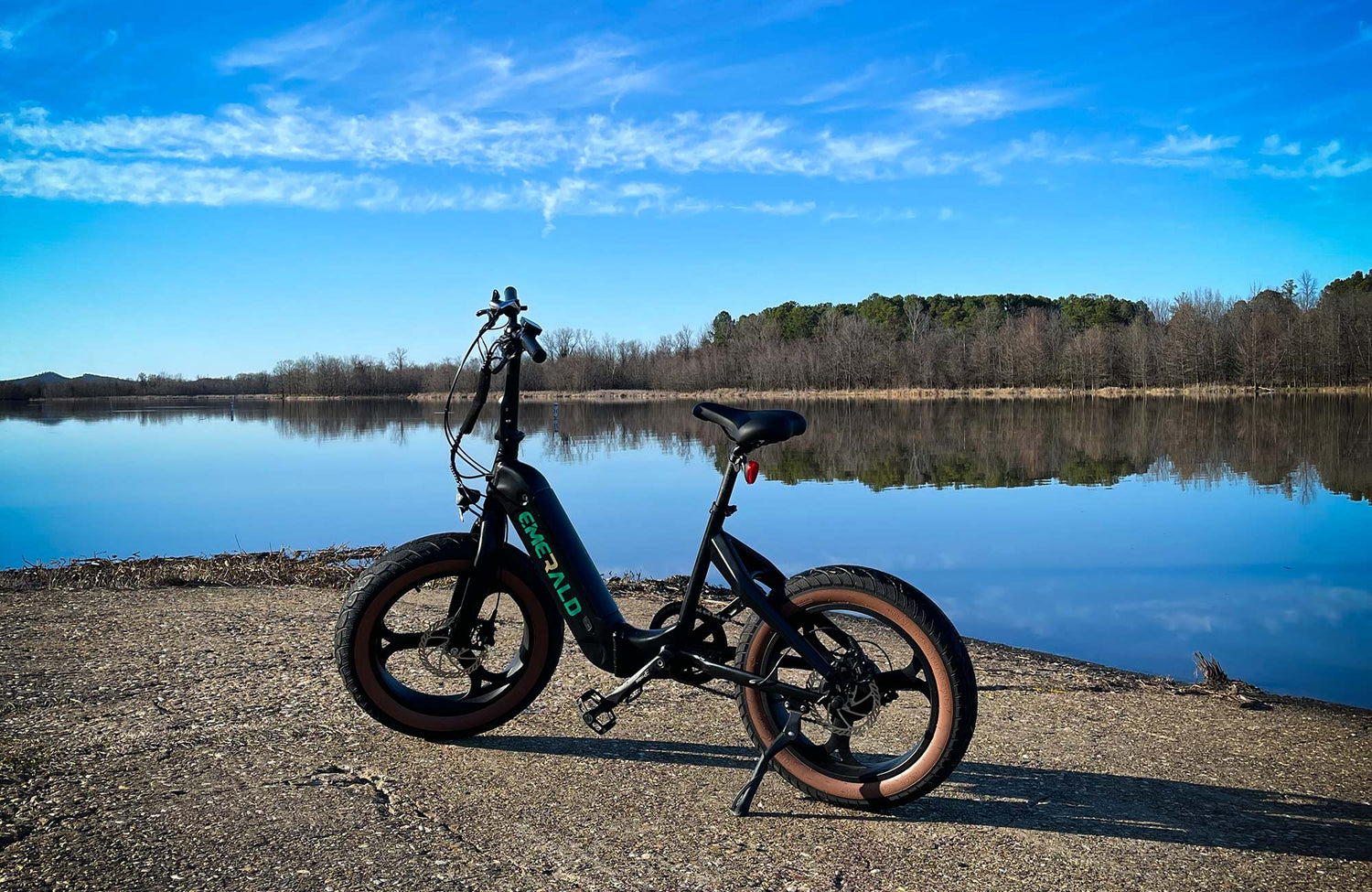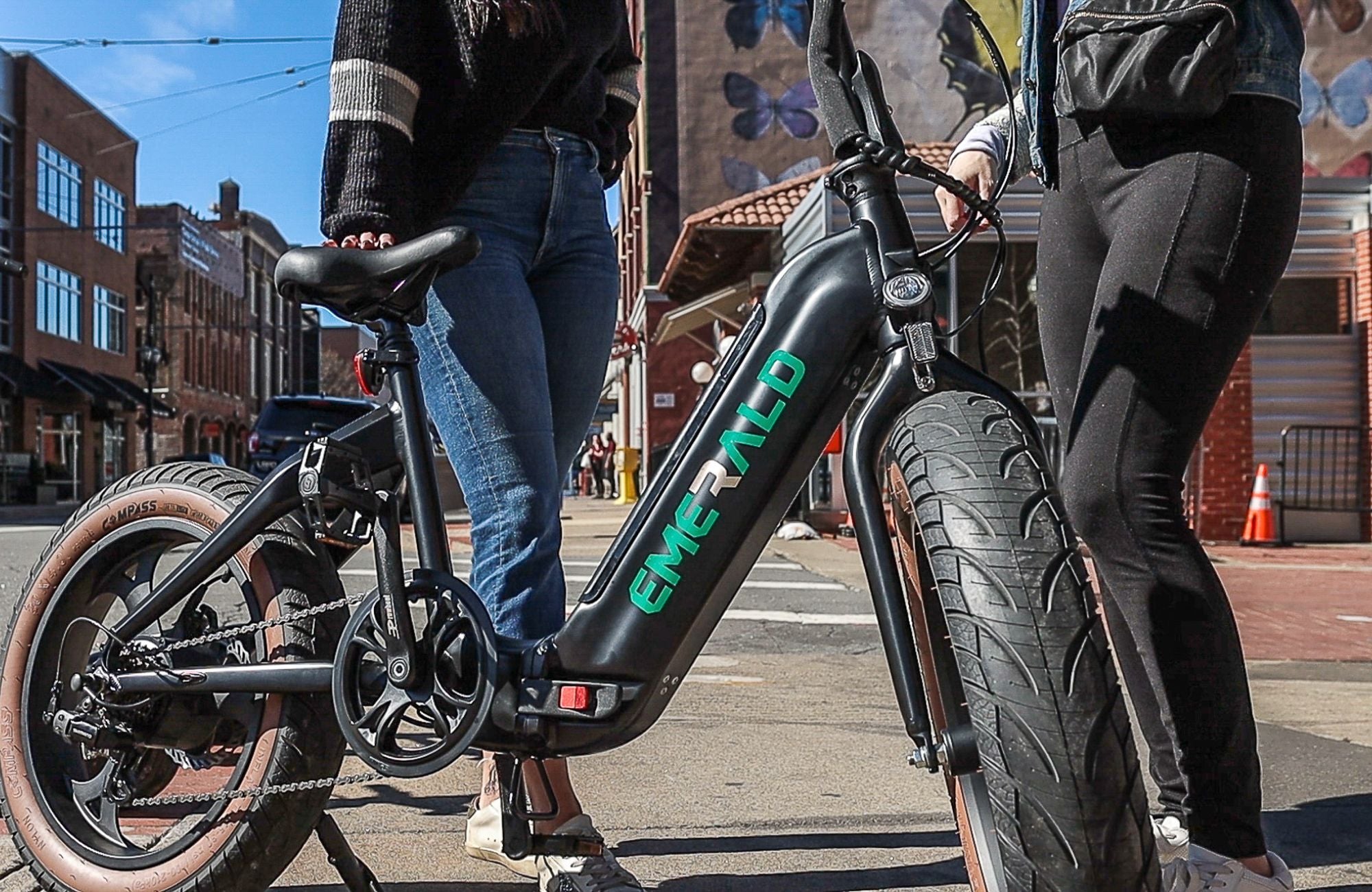Don't let the motor fool you, as you can still enjoy many physical and mental health benefits when you're riding your electric bicycle (ebike). Even a quick trip to the grocery store or around the lake can burn calories and leave you feeling energized. Tackling steeper terrain or going on a longer ride will be even more rewarding. Even if the motor is doing all the work, you'll still benefit mentally. A quick break during a workday can lead to decreased stress levels, anxiety, and depression.
Read on for more health benefits of riding an ebike.
Get the Right Amount of Cardio for You
You don't have to ride the hilliest routes or challenge your buddies to an all-out sprint to get your heart pumping. As long as you're pedaling along with the motor enough to elevate your heart rate, you're getting a cardio workout. What's great about an ebike is that you can fine-tune the amount of work you do and how much assistance you get at any time. If you're feeling tired, then crank the motor up more. If you're in the mood for a good workout, try a lower assistance level for a better workout.
If you want to maximize your heart health, aim for specific heart rate zones. Zone 1 is the easiest, at around 50 to 60% of your maximum heart rate. It's where you'll spend time if you're spinning or pedaling very gently. Crank it up to zone 5 for the most intense cardiovascular training. This is around 95 to 98% of your maximum heart rate and can only be sustained for a few minutes.

The more you ride, the greater the cardiovascular rewards. One study showed that regular bikers were around 15% less likely to have heart attacks than noncyclists. But you don't have to be an avid cyclist to improve your heart health. Even if you have less time to spare, you can still benefit from reduced rates of heart disease.
Lower Stress Levels
On an ideal day, you'll head out for a ride when it's warm and sunny. But even if the weather isn't cooperating, you can get some fresh air and exercise while cruising around town or exploring a new trail. Even a short ride can reduce stress levels.
Pedaling to work can also improve your stress levels, at least temporarily. Researchers from Concordia's John Molson School of Business discovered that employees who rode to work were less stressed within the first 45 minutes of work than colleagues who drove to work. Arriving at the office feeling more relaxed can also set the tone for the rest of the day, even if your stress levels accumulate throughout the day.
Improved Mental Health
Whether you're feeling anxious, stressed, or depressed—or you're just looking for a quick mood boost—the answer can be found on two wheels. As you ride, endorphins are released from your brain and throughout your nervous system. Not only do these hormones help reduce pain, but they can also boost feelings of happiness and well-being. It's similar to a runner's high for cyclists.
The more you ride, the better you'll feel. Research has shown that biking can be more mentally rewarding than other types of exercise. But you'll need to ride regularly for maximum benefits. Heading out for at least 45 minutes three to five times per week can support your mental health. Even a few quick trips around the block can decrease stress and make you more alert.
Ebikes are Great for Active Recovery
Whether you want to take an easy day after a hard workout or you're looking to gain strength in your lower body, cycling is ideal for active recovery. The beauty of an ebike is that you're in full control of how much work you put in. If your legs are feeling like cement, then let the motor carry you. If you want to get your heart rate up without getting too sweaty, adjust the gear and motor combinations until you find one that feels right.
Taking it easy during recovery rides can set you up for more successful hard rides. If you want to nail your recovery rides, try scheduling one or two into your weekly cycling sessions. You'll benefit most by taking it easy the day after a hard ride.
Keep your recovery rides short. That means sticking to flat terrain and pedaling lightly for 30 to 45 minutes. Anything over an hour, and you might be overdoing it, even if you aren't pedaling hard or fast.

Less Joint Strain
Cycling is a highly effective, low-impact workout. It's ideal if you have arthritis since there's no strain on your joints. Even if you're doing most of the work on an electric bike, your muscles will take the brunt of the impact, not your bones. It's physically and mentally rewarding for anyone who wants to exercise but can't sustain the impact of running or walking.
Whether you're cycling for fitness or just general health, it's easy to incorporate even a quick ride into your daily routine. If you need some grocery essentials, then cruise to the store on your electric bike. If you work within commuting distance, ditch the car and travel by bike instead.
Even new cyclists can build up strength and stamina. Riding just 15 minutes a few times a week can be a rewarding way to start, followed by longer rides when you're ready.
Your key muscle groups are working hard as you pedal. That means you'll also improve your strength and flexibility. This Cleveland Clinic article states that riding a bike activates your hamstrings and quadriceps around 17%. Your glutes are also activated by 15-17%. Cycling can loosen these muscles along with your calves and hips to help improve flexibility in your lower body.
Weight Loss
Cycling is low-impact, but you can blast tons of calories. Even a steady-moderate bike ride can burn around 300 calories in an hour. Want to burn even more calories? You can pedal faster for the same amount of time. The number of calories burned also depends on your size and average speed, but it's possible to burn well over 400 calories in 30 minutes by picking up the pace.
If you're short on time but want maximum benefits, try a high intensity interval training (HIIT) workout. The goal is to burn lots of calories in a short amount of time. You can do this by cranking up the resistance and pedaling as fast as possible for 30 to 60 seconds. On an ebike, you can do this by switching to a harder gear and decreasing the motorized assistance. Then switch to an easier gear and recover for 2 to 3 minutes before sprinting again.








Leave a comment
This site is protected by hCaptcha and the hCaptcha Privacy Policy and Terms of Service apply.